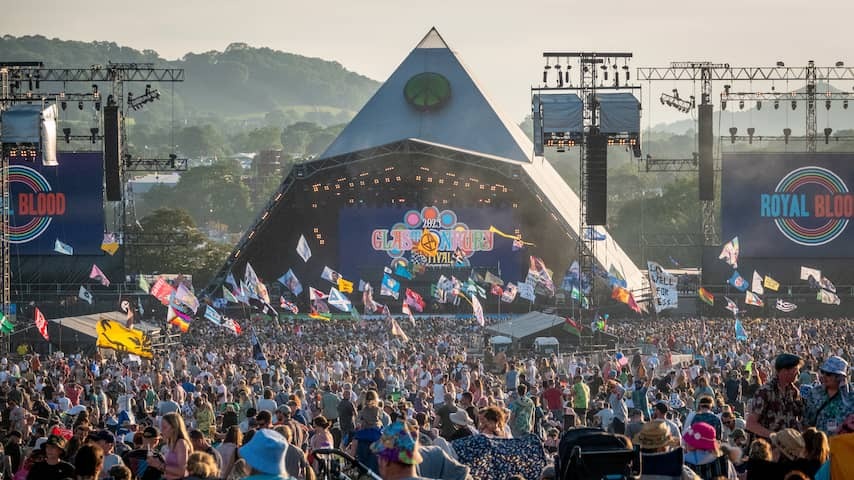
Glastonbury has grown into one of the largest and most influential festivals in the world in 55 years. What started on a meadow with fifteen hundred visitors is now the place where more than a thousand artists perform this week. How did this world-famous festival begin?
The Glastonbury Festival of Contemporary Performing Arts, as it is officially called, takes place in the South English town of Pilton, near Glastonbury. That village is about a three-hour drive from London and turns into a giant festival site for five days.
Approximately 200,000 visitors can enjoy more than a thousand performances on more than a hundred different stages spread over 9 square kilometers. For comparison: the Pinkpop site fits ten times in the area of Glastonbury.
The origin of the festival lies in 1970. Dairy farmer Michael Eavis visits a blues festival a year earlier where Led Zeppelin plays, among others, and is inspired to organize something similar. He decides to try it himself and turns his meadow into a festival site. The first edition takes place on September 19, 1970, under the name Pilton Pop, Blues & Folk Festival.
Access costs 1 pound, including camping and a glass of milk, from Eavis’ own cows. Approximately fifteen hundred people come to see artists such as Al Stewart and Marc Bolan. Striking detail: the festival takes place one day after the death of Jimi Hendrix. A year later the festival is free and already attracts about twelve thousand visitors.
The years in which Glastonbury has grown
From the 1980s Glastonbury becomes increasingly large. In 1990 it gets the name it still bears. The festival attracts 70,000 visitors and a ticket costs 38 pounds.
In the 1990s, Glastonbury grew again, partly due to the rise of Britpop and dance. Bands such as Blur, Oasis, Pulp and Radiohead are on stage for the first time in that period. The festival is developing into a place where big names and new movements come together.
In this century, Glastonbury has further developed into a cultural and social event. In addition to music, there is room for theater, dance and other art forms. Creative zones are given a permanent place and artists from all genres take the stage: from The Rolling Stones to Stormzy and from Muse to Beyoncé.
And that’s just the tip of the iceberg. Anyone who browses the archives of the festival will come across an impressive list of headliners. This year these include Olivia Rodrigo, Rod Stewart and Coldplay. In the past, artists such as The Cure, Lady Gaga and Stevie Wonder also performed.
Sustainability plays an increasingly important role at Glastonbury
Since the beginning of this century, the Glastonbury organization has encouraged visitors to eat vegetarian food, and environmental awareness is also receiving more and more attention. In 2019, David Attenborough will give a speech on climate change.
Since that year, plastic bottles have been banned on the site – a measure that Attenborough has publicly praised. Almost everyone also takes their tent back home after the festival. This is not always the case at other festivals.
Making such ambitions a reality is only possible with help. Glastonbury largely runs on volunteers, who receive a ticket and a place to stay in exchange for their efforts. Moreover, the proceeds from the festival have been going to charities since the 1980s, such as Greenpeace, Oxfam and WaterAid.
The fact that the festival takes place in the middle of nature also requires care for the landscape. In 1996, organizer Eavis therefore decided to take a rest year for the first time, to give the site time to recover. Since then, a break has been taken every five years. That will also happen next year.
The popularity of Glastonbury remains undiminished. For the upcoming edition, all tickets were sold out within half an hour. For 378.50 pounds (about 450 euros), visitors get five days of access to a site with hundreds of performances, art installations and social initiatives.